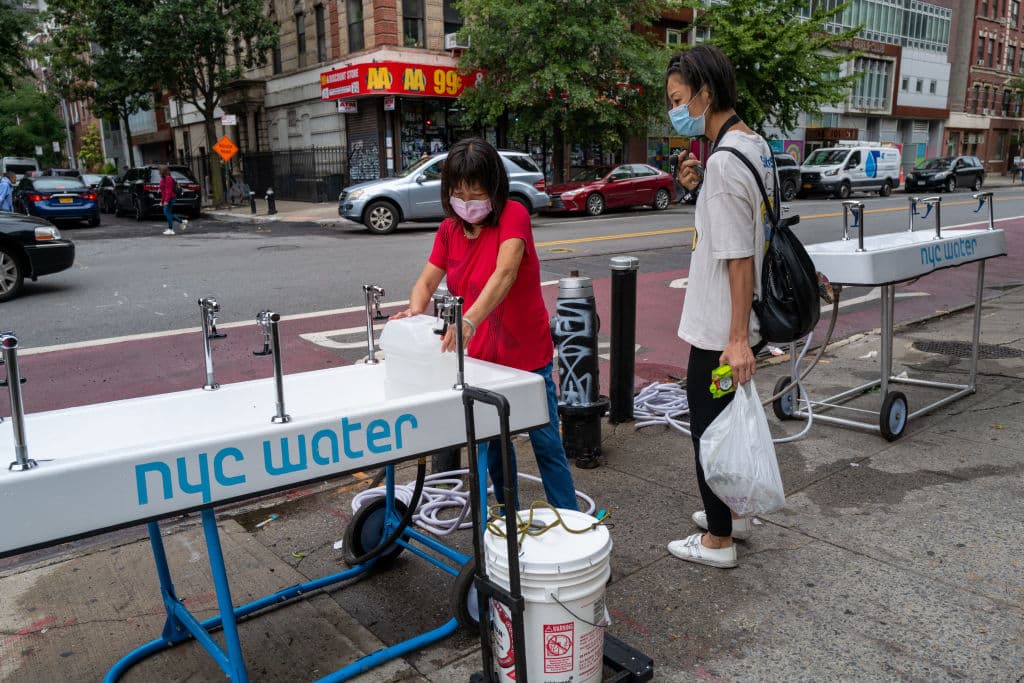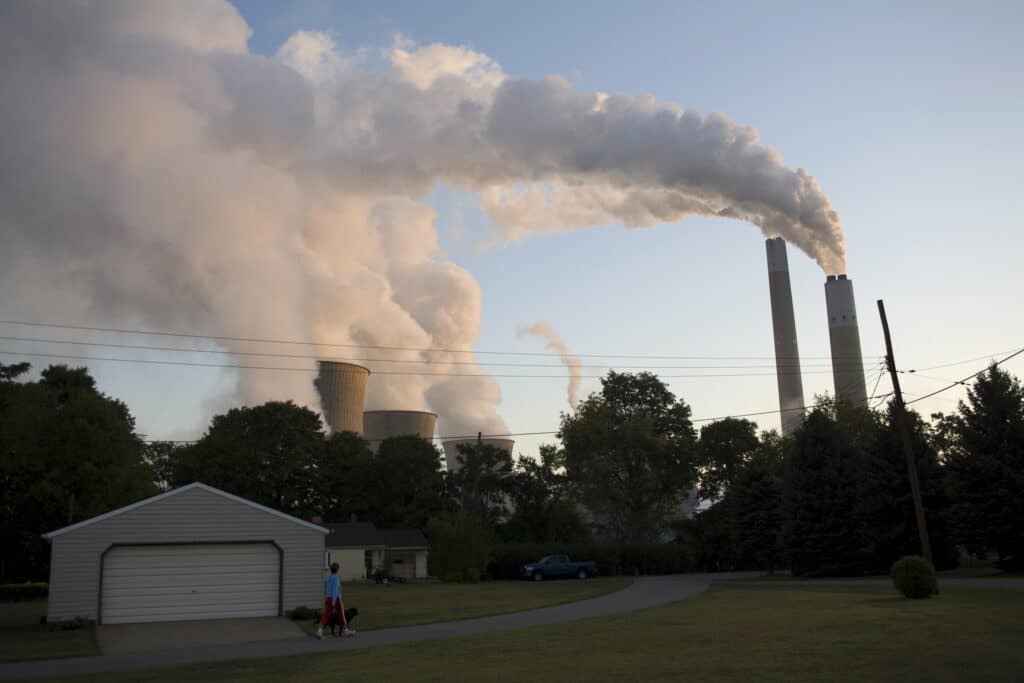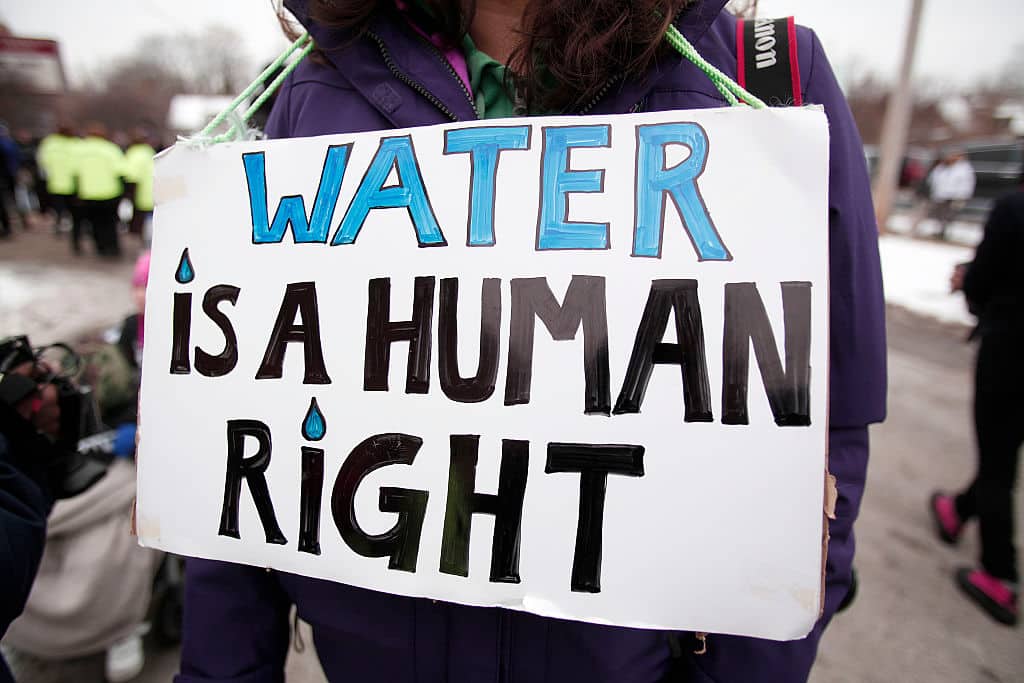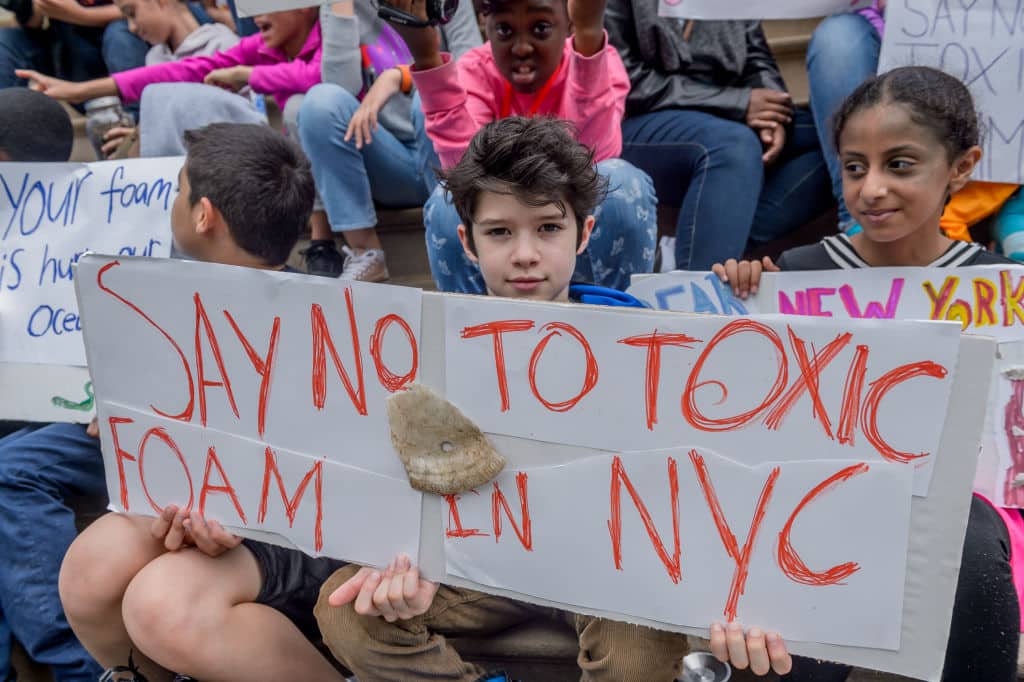Environmental Toxins 101: Everything You Need to Know

 Why you can trust us
Why you can trust us
Founded in 2005 as an Ohio-based environmental newspaper, EcoWatch is a digital platform dedicated to publishing quality, science-based content on environmental issues, causes, and solutions.
When it comes to environmental toxins, many of us conjure images of industrial smokestacks, but unfortunately, they aren’t in just the most obvious places, but they’re everywhere in our daily lives – in the water we drink, the air we breathe, the food we eat, the products we use on our body, in our homes and our gardens.
These toxins with enough concentration can wreak havoc on our health with major threats that include cancer-causing carcinogens, and other substances that upend cardiovascular, endocrine, and respiratory functions, as well as, lead to chronic illness.
As scientists and healthcare workers are understanding more and more about the effects of these toxins and not only how they affect us, but how they may trigger other problems within our bodies, the need for us to figure out how to limit our exposure is becoming more important.
So what exactly are these toxins, and how can we limit our exposure and who is helping to drive systems-level change?
First let’s get some facts.
Quick Facts
- Environmental toxins aren’t just human-made, but they also naturally occur in the environment like arsenic, lead, mercury, radon, formaldehyde, benzene and cadmium. Other sources of natural toxins are found in mushrooms, animal venom, and microscopic algae in oceans and lakes that make food sources poisonous to humans.
- Not all levels of toxin exposure are harmful. The biological effects (beneficial, indifferent or toxic) of all chemicals are dependent on several factors: the route of exposure, rate, duration, frequency, total dose and the type of hazard.
- The accumulation of toxins that end up in our bodies is called “Body Burden.” There are also ways to get tested to see what chemicals have built up in your body.
- There are physicians that now practice environmental medicine which look towards environmental factors as the root cause of illness.
- Marginalized communities are disportionately affected by environmental toxins.
Environmental Toxins: In the Air

According to the United Nations, nine out of 10 of us breathe air containing levels of pollutants that exceed World Health Organization limits, and around 7 million people die from diseases and infections related to air pollution. Air pollution is also partially responsible for climate change.
In the United States, the EPA has a full list of 188 air pollutants that they claim to be working with state, local, and tribal governments to reduce.
Here are some of the worst offenders:
Particulate Matter
Particulate Matter (PM10 and PM2.5) (also known as particle pollution) is extremely small particles and droplets in air that can be made up of a variety of components including nitrates, sulfates, organic chemicals, metals, soil or dust particles, and allergens (like pollen or mold).
Short-term exposure can lead to irritated eyes, nose and throat, worsening asthma, and lung conditions like chronic bronchitis, and cardiovascular issues. Long-term exposure can result in reduced lung function, cardiovascular and respiratory diseases, reduction in life expectancy.
PM10 and PM 2.5 comes from wood burning heaters, industrial sources, power plants, dust from construction sites, pollen, mold, brush and wildfires, dust storms, gasoline, oil and diesel fuel.
In 2017, in the United States, California was home to 15 of the 30 worst places for air pollution in the whole country.
Ozone (O3)
While Ozone – which is a gas composed of three atoms of oxygen – occurs in a good way in the Earth’s upper atmosphere, at the ground level it’s detrimental and a harmful contaminant.
According to the EPA, this main ingredient in smog is not emitted directly into the air, but created by chemical reactions between oxides of nitrogen (NOx) and volatile organic compounds (VOC). Essentially, it’s the perfect storm created when pollutants from cars, power plants, industrial boilers, refineries, chemical plants, and react to sunlight.
Similar to particulates, it creates lung issues, making it more difficult to breathe, inflames and damages airways, causes coughing, and aggravates lung diseases like asthma and emphysema.
Exacerbated in hot urban environments, it can be transported long distances by wind to more rural areas.
Dioxins
Dioxins are classified as “persistent organic pollutants (POPs), which means they take a long time to break down in the environment. And much like the environment, they also, because of their chemical stability and ability to be absorbed by fat tissue, can stay in the body for a long time, with a half-life of up to 7 to 11 years.
Dioxins come from burning of commercial or municipal waste, and backyard waste burning, fossil fuels, cigarette smoke, and volcanic activity and forest fires, as well as, the production of herbicides and pesticides. They can accumulate in food and cause cancer, reproductive and developmental issues, immune system damage and hormone disruption.
Environmental Toxins: In Water and Food

Polychlorinated Biphenyls (PCBs)
A toxin that is released into the environment through hazardous waste sites, illegal dumping of industrial waste and consumer products, and makes its way into the food chain (mainly fish), dairy products and animal fat. It increases risk of cancer, acts as an endocrine disruptor, and causes infertility and other hormone-regulated disorders.
BPAs
An industrial chemical used in plastics manufacturing and added to food containers, baby bottles, plastic water bottles, and hygiene products. Can leach into food, as well as, water. Particularly when microwaving. Linked to obesity, diabetes, heart disease, chronic inflammation, and disrupts hormones.
Lead
Lead contamination in drinking water usually comes from the leaching from plumbing lines.
Exposure to high levels of lead may cause anemia, weakness, and kidney and brain damage. Very high lead exposure can cause death.
Arsenic
One of the greatest public health threats, arsenic originates from contaminated groundwater. Arsenic is a carcinogen that could lead to cancer. Other adverse health effects that may be associated with long-term ingestion of inorganic arsenic include developmental effects, diabetes, pulmonary disease, and cardiovascular disease.
Perfluoroalkyl and Polyfluoroalkyl Substances (PFAS).
Highly prevalent industrial chemicals, and also known as a “forever chemical” due to its difficulty in being able to remove it from the environment. PFAS are used in nonstick cooking surfaces like Teflon pans and also in food packaging including paper wraps, liners and pizza boxes. PFAS affect human growth and reproduction, as well as liver, thyroid, and immune system function.
Environmental Toxins: In the Household

Volatile Organic Compounds (VOC)
VOC’s are chemicals that can be found in paints, stains, strippers and finishes, as well as, cleaners, aerosol sprays, personal care products, air fresheners, pesticides, and new furniture and flooring. Short term health issues that result from exposure are nausea/vomiting, dizziness, headaches, throat and eye irritation, and worsening of asthma symptoms, with longer term issues involving cancer, liver and kidney damage, and central nervous system damage.
Heavy Metals
Heavy metals such as aluminum, lead, cadmium, and mercury can hide in area rugs, carpets, pots and pans, beauty and self-care products, ceramic dinnerware and old paint residue. Symptoms of heavy metal poisoning can include low body temperature, abdominal pain, nausea and vomiting, numbness and tingling, with more life threatening symptoms involving abnormal heartbeat, anemia, brain damage and cognitive issues, kidney and liver damage, difficulty breathing, and cancer.
Polybrominated Diphenyl Ethers (PBDEs)
Used as fire retardants in foam furniture, carpet padding, electronics, plastics, textiles, and building materials. Overtime, its toxic accumulation in the human body has been associated with tumors, delayed brain development, and thyroid issues.
Phthalates
A softening agent used in plastics and in a variety of beauty and skincare products, also found in vinyl flooring. They are linked to endocrine disruption, developmental and reproductive toxicity, and cancer, have been banned from cosmetics in the European Union, but still remain prevalent in U.S. products.
Here is a list of personal care products that contain them and a deep dive on other toxins in beauty products.
Environmental Toxins and Social Injustice

When it comes to exposure to environmental toxins, it’s widely reported that marginalized communities, particularly people of color, and those that are disproportionately low-income see the brunt of pollution’s negative effects.
According to the National Institute of Environmental Health Sciences, 94% of deaths due to environmental pollution now occur in low and middle income countries with the World Bank stating that one in 10 people exposed to unsafe air pollution across the world, live in extreme poverty.
A key driver of this disproportionate exposure is structural racism and the histories of colonialism that continue to affect the world today.
As Dr. Sargis and his co-authors note, “Accounts of the industrial division of labor by race in major [United States] cities document how people of color were restricted to low wage, hazardous occupations while simultaneously being confined to low income housing near these industries.”
Injustice and Toxic Coal Ash
In 2016, US Civil Rights attorneys launched a probe into federal environmental policy to find out why toxic coal ash mainly ends up in poor, marginalized communities. Coal ash, the toxic-waste byproduct of coal burning, often contains lead, mercury, chromium, and cadmium, and depending on exposure levels, can cause cancer and harm most organs.
The 250-page report that resulted from this probe found that there are more than 1,000 operating coal ash landfills and ponds and many hundreds of ‘retired’ coal ash disposal sites. In South Carolina alone, there are 23 active sites, and every one of them is located in a community that is low-income and predominantly Black.
It was also found that the EPA didn’t have many regulations for coal ash and in August of 2022, Earthjustice sued the EPA for exempting half a billion tons of toxic coal ash from health protections.
Water Injustice in California
Besides increasing drought concerns and calamities over the last several years, nearly 400,000 Californians lack safe drinking water.
According to a study done by researchers at UC Berkeley and UCLA, the contamination – which involves arsenic, nitrate, and other chemicals – disportionately affects Latino communities and other communities of color.
Excessive groundwater pumping to feed the agriculture in the San Joaquin Valley, has caused increases in arsenic in the aquifer, which has affected several area low-income residents who are paying for the contaminated water.
Joaquin Esquivel, chair of the State Water Resource Control Board, told the LA Times, that the lack of safe and affordable drinking water is the result of generations of racist policies, particularly redlining policies, which involves denying homeownership and financial services to residents based on race.
Water Injustice in Flint, Michigan
Flint Michigan’s water crisis made national headlines after environmental injustice and systemic racism led to the neglect of several residents in the city whose population is majority Black, 45% below the poverty line after the city switched from the drinking water supply from Detroit’s system to the Flint River to save money.
The river for years had served as an unofficial waste disposal site, and was also contaminated by raw sewage from a waste treatment plant, agriculture and urban runoff and toxic leaching from landfills.
Water samples collected showed a dangerous spike in lead levels which were sickening residents, who despite complaints about foul-smelling and tasting, discolored water were told the water was safe. Eventually residents fought back and were awarded a settlement of $641 million, while government officials were charged with 43 felony counts and seven misdemeanors for their role in the crisis.
Environmental Toxins and the U.S. Military

In late November of 2021, military families and civilians on O’ahu’s Joint Base Pearl Harbor Hickam complained of smelling jet-fuel in the tap water, which turned out to be the result of 19,000 of jet fuel leaking into one of the island’s main drinking water aquifers from the US Navy’s Red Hill Underground Fuel Storage Facility.
Much like Flint, residents were gaslit that their water was safe, despite hundreds becoming ill from the degraded storage facility that had reportedly been leaking for years since its construction during World War II.
The incident has not only drawn attention to the military and its extensive history of environmental devastation of Hawai’i – part of which involved decades of dumping deadly chemicals in the ocean – but the impact of US military around the world.
Most know about the use of Agent Orange, the herbicide the military used as parts of its herbicidal warfare program called Operation Ranchhand during the Vietnam War. Those who were exposed to its high dioxin levels have suffered dire long-term effects. More than 50 years later, its toxic byproducts are still found in the soil and affecting food sources.
More popular in recent times, burn pits, which were banned in 2010, used on various military bases around the world, were commonly used to dispose waste collected on base, which included plastics, rubber, chemical mixtures and medical waste. Some burn pits covered as much as 10 acres of land, which has also had dire impacts on those exposed and also the surrounding ecosystems.
The military was found to also be contaminating more water across the US from utilizing PFAS through military firefighter’s usage of aqueous film-forming foam, or AFFF, which contains extremely high levels of PFAS, and was mandated in 2020 through the National Defense Authorization Act to be phased out.
Congress recently mandated the military check for PFAS pollution at 700 facilities while allocating $571m for cleanup.
Policy

In April of this year, the European Union proposed sweeping changes through a plan called Restrictions Roadmap, that will use existing laws to ban thousands of harmful chemicals including all carcinogenic flame retardants, bisphenols in plastics, PVC, restrict PFAS as well as 2,000 harmful chemicals found in baby diapers, pacifiers and childcare products.
Beginning in two years, the banning process will lead all substances to be gone by 2030, according to the European Environmental Bureau. If fully implemented, it will be the largest regulatory removal anywhere in the world.
The EU has already made progress restricting chemicals in cosmetics and toys, banning more than 3,000 chemicals between 2009 and 2022.
In comparison, the United States government continues at a glacial pace.
In 1976, Congress enacted the Toxic Substances Control Act, which provided EPA with authority to require reporting, record-keeping and testing requirements, and restrictions relating to chemical substances and/or mixtures, but certain substances were excluded from it including food, drugs, cosmetics and pesticides and focused more on the production, usage, and disposal of specific chemicals including polychlorinated biphenyls (PCBs), asbestos, radon and lead-based paint.
Though updated during the Obama administration, it still fell woefully short in handling most environmental toxins and in January 2022, the EPA added its first new chemical to air pollution list in 30 years.
There has been recent national legislation on PFAS-laden items with the EPA trying to hold manufacturers accountable, as well as, the banning the usage of certain pesticides. In 2021, there was also the Biden-Harris Lead Pipe and Paint Action Plan, to replace all the lead water pipes and service lines in the country in the next decade, however, most legislation has been piecemeal regulation leaving it largely up to individual states to roll out more effective plans.
In 2021, Maine became the first state to ban all usage of PFAS chemicals by 2030. Other states that have enacted state bans on PFAS in food packaging are also California, Colorado, Connecticut, Maryland, Minnesota, New York, Vermont and Washington, with Colorado, Maryland, Maine and Vermont banning them in carpets, rugs.
California is also trying to phase out gas-powered cars by 2035 to help reduce toxic emissions.
Still there seems to be a long way to go, and those at the EPA, particularly their new administrator Michal Freedhoff, has had to contend with years of neglect, a small budget that has declined by nearly 50% since 1980, failed regulations, and residual issues from the Trump administration. While the Biden administration promised to fund 87 new hires to take on roles, according to ProPublica, continuous stopgap funding measures impeded progress.
Grassroots Level Change
Where government policy is lacking, grassroots organizations have always been moving to create systems-level change locally and nationally.
Back in the 80s, environmental activist Lois Gibbs, organized her community to push local, state, and federal governments to evacuate and clean up the chemical waste buried beneath her neighborhood. Eventually her efforts led to the EPA creating the Superfund Program, which works to identify and clean the nation’s most toxic waste sites.
Here are some the groups currently moving the dial:
The Environmental Working Group
The Environmental Working Group is a nonprofit American activist group that specializes in research and advocacy in the areas of agricultural subsidies, toxic chemicals, drinking water pollutants, and corporate accountability, who built consumer guides to help learn about the hidden health dangers in your food, water and everyday products to make better decisions.
Toxic-Free Future
Toxic-Free Future works to create a healthier tomorrow by fostering the use of safer products, chemicals, and practices through advanced research, advocacy, grassroots organizing, and consumer engagement. Also has an exhaustive list featuring a coalition of organizations, businesses, and blogs to help you understand how to live more toxic-free.
Earthjustice
Nonprofit law organization that has a Toxic Exposure & Health Program that uses the power of the law to ensure that all people have safe workplaces, neighborhoods, and schools; have access to safe drinking water and food; and live in homes that are free of hazardous chemicals. We work to ensure that regulators acknowledge and redress the inequitable burdens imposed on Black, Indigenous, and people of color (BIPOC) — by the manufacturing, use, and disposal of toxic chemicals.
NDN Collective
An Indigenous-led organization dedicated to building Indigenous power and working towards climate justice and fighting against the contamination and exploitation of the extractive industries that are at the root of climate change.
We Act
WE ACT’s mission is to build healthy communities by ensuring that people of color and/or low income residents participate meaningfully in the creation of sound and fair environmental health and protection policies and practices.
Sierra Club
Environmental organization with chapters in all of the 50 states that works for clean air, safe water, and land protection.
What You Can Do to Limit Your Own Exposure
- Filter your water to avoid high concentrations of heavy metals such as arsenic, mercury, lead, aluminum and cadmium. Also, have your tap water tested and if contamination is found, put a filter on every faucet, including in the shower.
- Check with your local health department and get your home tested for lead or go to your local hardware store to get a test kit for radon to avoid poisoning.
- Get rid of pesticides and try these natural alternatives.
- Stop using herbicides and try these organic weedkillers.
- Avoid dry-cleaning clothes. Many cleaners use the chemical perchloroethylene (PERC), which can pollute the air at home.
- Look for “BPA free” on labels when using plastic bottles and canned food. Use glass or ceramic containers to store and microwave food.
- Ditch teflon cookware, and use stainless steel or cast iron pans instead.
- Be discriminant about your personal care products. Here is the Environmental Working Group’s search tool to see what’s in your products that you purchase or are thinking of purchasing.
- When painting your house, look for Low-VOC and Zero-VOC paints and finishes.
- Buy fresh, organic, or grow your own produce.
- Have people take their shoes off when they come into your home to reduce pesticides and other chemicals they may pick up outside. Residual toxic chemicals can last in carpets for years.
- When buying plastic products for the home, ask if they contain PVC or phthalates. Also, check the label of baby products to ensure they are phthalate-free.
- Avoid purchasing flame retardant clothing for both youth and adults.
- Avoid foam and polyester products when shopping for new furnishings and bedding. Choose wool or cotton instead.
- Use natural cleaning supplies. You can learn to make your own here or shop non-toxic products here.
Takeaway
While the pervasiveness and ubiquitousness of environmental toxins can be daunting, and governmental policies and overhauls of industry appear necessary to make large sweeping changes, there are ways to reduce exposure, and eliminate some toxicity, while grassroots movements move to make change on local, national, and international levels.
Subscribe to get exclusive updates in our daily newsletter!
By signing up, you agree to the Terms of Use and Privacy Policy & to receive electronic communications from EcoWatch Media Group, which may include marketing promotions, advertisements and sponsored content.

 233k
233k  41k
41k  Subscribe
Subscribe 




